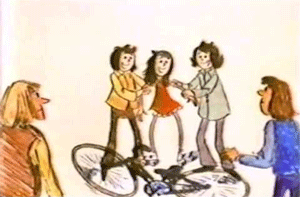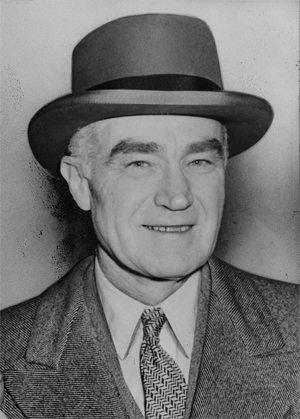Re: The Dark Side of the Orgasmic Meditation Company: OneTas
A Luce Woman - Widow Tells of 'Brando in My Bed’
by Mark Bulliet
New York Post
June 19, 2006 | 4:00am
NOTICE: THIS WORK MAY BE PROTECTED BY COPYRIGHT
Socialite Leila Hadley Luce says she has a hidden past of S&M sex, drugs and high-profile bedmates – including Marlon Brando, according to depositions in a sex-abuse lawsuit lodged against her by her daughter and granddaughter.
The 81-year-old author, philanthropist and widow of Time magazine scion Henry Luce III said she spent 20 years hooked on Dexedrine and also used amyl nitrites or “poppers.”
During a love affair with the late cartoonist and “Addams Family” creator Charles Addams, she said they “once went through an entire box [of poppers]. It’s lucky we didn’t die,” according to her deposition.
“I never knew they were bad for you,” she said of the infamous inhalants later linked to the 1980s gay-sex scene.
Leila Hadley Luce also said she was prescribed Dexedrine at age 20 and spent the next two decades hooked on the amphetamine.
“[Dexedrine] was wonderful. I got so much work done,” she said.
The socialite also confides she got Brando into bed during the stage run of “A Streetcar Named Desire.”
But when she turned prude, he bizarrely swiped all the clocks from her home.
“I didn’t really have an affair with Marlon Brando, he was too kinky for me . . . we were in bed together, but then he wanted to be very kinky and I didn’t want to do anything with him,” she said in her deposition.
“He stole all my clocks, he stole a whole bunch of clocks and then . . . [his agent] set them on my doorstep all ticking at the right time and he said, ‘Oops, sorry, a thief,’ ” she added.
“And when I saw [Brando] later in Hollywood and I asked him about this, he said, ‘Nobody should have so many clocks,’ and I said, ‘Well, my mother gave them to me, you shouldn’t have stolen them all.’”
The socialite married the son of Time magazine’s co-founder in 1990. He died in 2005.
Leila Hadley Luce and Henry Luce III were sued in 2003 by her daughter, Caroline Nicholson, 47, and Nicholson’s 17-year-old daughter – but the Sutton Place staple adamantly denies the charges, calling Nicholson “money mad.”
Nicholson’s sex-abuse claim against her mom and stepdad’s estate was tossed by a judge because it exceeded the state’s statute of limitations, but the judge allowed her granddaughter’s claim to stand.
The 17-year-old is still within the age limit for this type of case, which would have expired when she turned 21.
The suit may go to trial in the fall, said Nicholson’s Manhattan attorney, John Aretakis.
Luce III has not been accused of abusing Nicholson’s daughter.
In a 1971 letter, which was entered into evidence, Leila Hadley Luce tells her other daughter, Victoria Barlow, 52, how she and Luce III had gone through “our SM bit,” and how he likes poppers and joints.
Aretakis said the graphic letters prove her children were actively a part of her sex life.
The Nicholsons’ lawsuit received a big boost in March, when Barlow claimed in a deposition that she was also molested by their mom as a child.
Meanwhile, Matthew Eliott, Nicholson and Barlow’s brother and the only one of Leila Hadley Luce’s four children who is not estranged from their millionaire mom, said his mother was no monster.
“Did she have some lapses in judgement? Yes. Was she this evil, awful monster? No,” said the North Salem, N.Y., veterinarian.
by Mark Bulliet
New York Post
June 19, 2006 | 4:00am
NOTICE: THIS WORK MAY BE PROTECTED BY COPYRIGHT
YOU ARE REQUIRED TO READ THE COPYRIGHT NOTICE AT THIS LINK BEFORE YOU READ THE FOLLOWING WORK, THAT IS AVAILABLE SOLELY FOR PRIVATE STUDY, SCHOLARSHIP OR RESEARCH PURSUANT TO 17 U.S.C. SECTION 107 AND 108. IN THE EVENT THAT THE LIBRARY DETERMINES THAT UNLAWFUL COPYING OF THIS WORK HAS OCCURRED, THE LIBRARY HAS THE RIGHT TO BLOCK THE I.P. ADDRESS AT WHICH THE UNLAWFUL COPYING APPEARED TO HAVE OCCURRED. THANK YOU FOR RESPECTING THE RIGHTS OF COPYRIGHT OWNERS.
Socialite Leila Hadley Luce says she has a hidden past of S&M sex, drugs and high-profile bedmates – including Marlon Brando, according to depositions in a sex-abuse lawsuit lodged against her by her daughter and granddaughter.
The 81-year-old author, philanthropist and widow of Time magazine scion Henry Luce III said she spent 20 years hooked on Dexedrine and also used amyl nitrites or “poppers.”
During a love affair with the late cartoonist and “Addams Family” creator Charles Addams, she said they “once went through an entire box [of poppers]. It’s lucky we didn’t die,” according to her deposition.
“I never knew they were bad for you,” she said of the infamous inhalants later linked to the 1980s gay-sex scene.
Leila Hadley Luce also said she was prescribed Dexedrine at age 20 and spent the next two decades hooked on the amphetamine.
“[Dexedrine] was wonderful. I got so much work done,” she said.
The socialite also confides she got Brando into bed during the stage run of “A Streetcar Named Desire.”
But when she turned prude, he bizarrely swiped all the clocks from her home.
“I didn’t really have an affair with Marlon Brando, he was too kinky for me . . . we were in bed together, but then he wanted to be very kinky and I didn’t want to do anything with him,” she said in her deposition.
“He stole all my clocks, he stole a whole bunch of clocks and then . . . [his agent] set them on my doorstep all ticking at the right time and he said, ‘Oops, sorry, a thief,’ ” she added.
“And when I saw [Brando] later in Hollywood and I asked him about this, he said, ‘Nobody should have so many clocks,’ and I said, ‘Well, my mother gave them to me, you shouldn’t have stolen them all.’”
The socialite married the son of Time magazine’s co-founder in 1990. He died in 2005.
Leila Hadley Luce and Henry Luce III were sued in 2003 by her daughter, Caroline Nicholson, 47, and Nicholson’s 17-year-old daughter – but the Sutton Place staple adamantly denies the charges, calling Nicholson “money mad.”
Nicholson’s sex-abuse claim against her mom and stepdad’s estate was tossed by a judge because it exceeded the state’s statute of limitations, but the judge allowed her granddaughter’s claim to stand.
The 17-year-old is still within the age limit for this type of case, which would have expired when she turned 21.
The suit may go to trial in the fall, said Nicholson’s Manhattan attorney, John Aretakis.
Luce III has not been accused of abusing Nicholson’s daughter.
In a 1971 letter, which was entered into evidence, Leila Hadley Luce tells her other daughter, Victoria Barlow, 52, how she and Luce III had gone through “our SM bit,” and how he likes poppers and joints.
Aretakis said the graphic letters prove her children were actively a part of her sex life.
The Nicholsons’ lawsuit received a big boost in March, when Barlow claimed in a deposition that she was also molested by their mom as a child.
Meanwhile, Matthew Eliott, Nicholson and Barlow’s brother and the only one of Leila Hadley Luce’s four children who is not estranged from their millionaire mom, said his mother was no monster.
“Did she have some lapses in judgement? Yes. Was she this evil, awful monster? No,” said the North Salem, N.Y., veterinarian.



